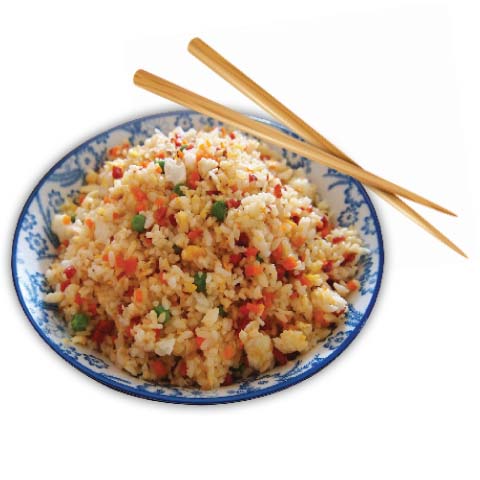
This may not be the best time to talk about visiting Yangzhou (揚州) in Jiangsu province in Eastern China, but you can bring a taste of Yangzhou right into your home. And you don’t even need to wear a face mask or take your temperature.
You may not have gone to Yangzhou but I’m sure you’ve eaten what is probably its most famous dish – Yangchow (the romanized version of the name) fried rice. Yes, it’s not just a name but a real place, a rather beautiful city actually, with lovely gardens (Slender West Lake is a national park within the city, but please don’t ask if there is a Fat West Lake) and other scenic spots.
Yangzhou fried rice is acknowledged by most as the original fried rice, supposedly invented by a regional magistrate in the Qing Dynasty (1644-1911). Basic ingredients are cooked rice (day-old or leftover rice is preferred, as newly cooked rice can be too sticky), diced char siu (asado) or lap cheong (Chinese sausage) or – better yet – both, chopped spring onions and eggs. Variations include the addition of shrimps, green peas, mushrooms or ham and flavored with oyster sauce, soy sauce or chili sauce. In other words, it can be what you want it to be, the fried rice of your dreams, an easy one-dish meal made with whatever is in your pantry or refrigerator.
An interesting difference, I found, is in the addition of the eggs. One version has the scrambled eggs cooked separately then mixed in with the finished product (called “silver covered gold”), while the other has the scrambled, uncooked egg poured in just as the rice is almost done so the egg coats the rice and whatever other ingredients are in your dish (“gold covered silver”). The latter allows the rice to have the distinctive golden color of “true” Yangzhou fried rice; in fact, some recipes call for separating the egg yolk and white, with the scrambled yolk poured in first to coat the rice and give it the bright yellow-gold color, before the scrambled egg white is mixed in.
The other, more intriguing – and certainly delicious – dish that Yangzhou can lay claim to is Lion’s Head Meatballs (獅子頭). While some claim the dish to have also originated from Zhenjiang (also in Jiangsu province across the Yangtze River from Yangzhou) and Huai’an (also in Jiangsu, north of Yangzhou; Zhou Enlai, who was from Huai’an, is supposed to have cooked this dish), it is Yangzhou that is most associated with the dish. In fact, a cookbook from the mid-Qing Dynasty written by a salt merchant from Yangzhou included a dish very similar to this.
The large, succulent meatballs are said to resemble the head of the Chinese guardian lion, stewed with napa cabbage (called Chinese pechay hereabouts) and served with the cabbage leaves and the soup it is stewed in, itself extremely tasty.
What makes these meatballs so soft, fluffy actually, is the proportion of fat and lean meat in the ground pork – at least 50-50, some go up to 60-40 or even 70-30 in favor of fat. Some recipes add chopped water chestnuts, chopped shrimp or even crab roe for additional flavor. Egg whites serve as binder so the meatballs keep their shape. Crucial is the size of the meatballs – as large as your fist or a tennis ball at the minimum.
A clay pot is usually used. The bottom of the pot is lined with cabbage leaves and the meatballs placed on the leaves. Add soup stock, then put more cabbage leaves over the meatballs and cover the pot with a tight lid. Bring to a boil and cook over a gentle, low flame. The cabbage leaves should be totally limp, almost melting, the meatballs fluffy and oh-so-soft.
Enjoy Yangzhou right in your home, right on your dinner plate!
